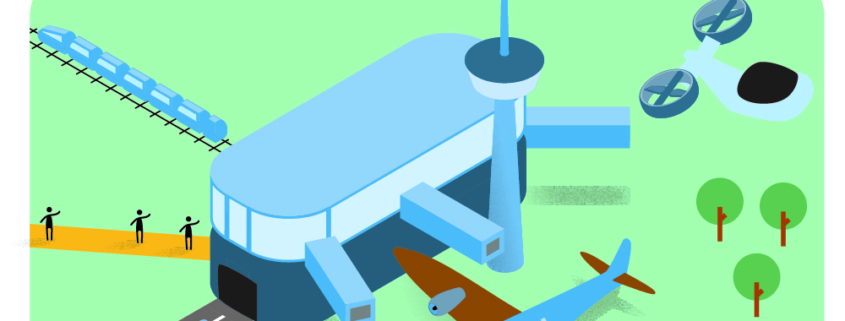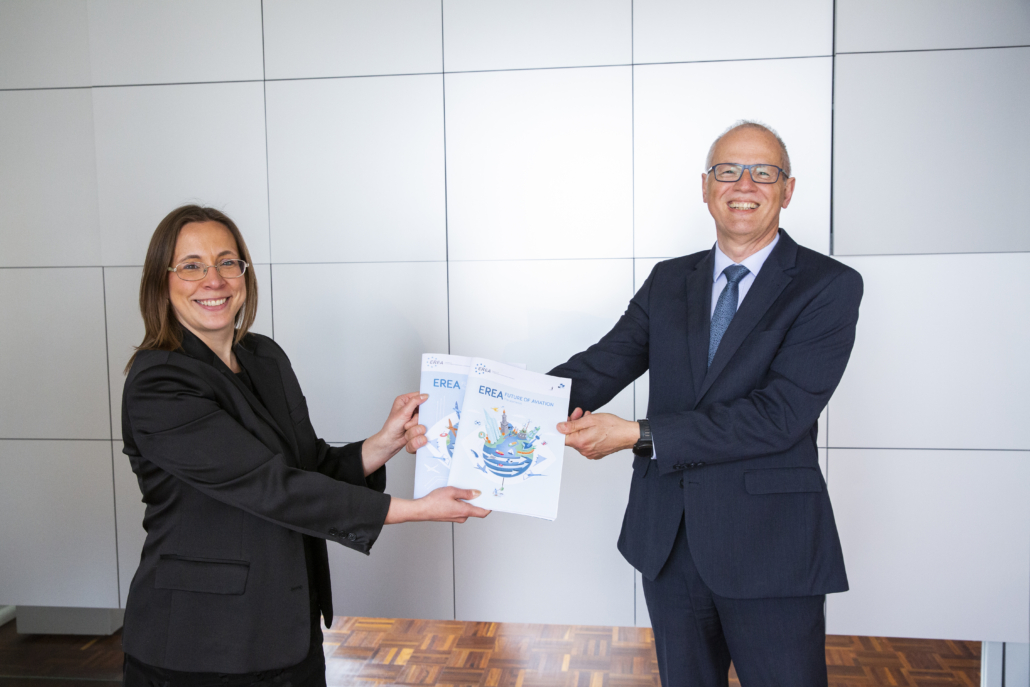Over the past year EREA built its own vision about the outlook of civil aviation. The result, published in spring of 2021, is a study detailing four scenarios of what the future could look like and what the associated R&D topics for civil aviation could be. Ligeia Paletti, consultant at the Royal Netherlands Aerospace Centre, is the coordinator of the study.
The impact of the COVID-19 pandemic on aviation has forced the entire aviation sector to re-evaluate the future for aviation and the new directions and steps which need to be taken. This change has been accelerated by the COVID-19 crisis, but it was already in the air in 2019, as increased societal awareness on the impact of aviation on climate change signalled that radical change is needed.
Among the number of studies and forecasts for the future produced in the past year, the study ‘EREA Future of Aviation’ is unique in that it purely reflects the perspective of the aviation research community, as it reflects the culmination of intensive collaboration of over 100 EREA colleagues from 15 institutes and 13 countries.
Scenarios and trends
“Waking up in 2050, aviation will still be there, but surely different than it is today”, states Ligeia Paletti. “Therefore the study divided in two parts gives a range of possibilities on how the future might develop, identified in four scenarios: Madmax, Tech for You, Stripping Down and Optimising Together”. Next to the four scenarios, research and development trends are identified.
“The scenarios are intentionally extreme, but none of them are unrealistic”, clarifies Paletti. “The rise of nationalistic movements, deglobalisation and the Brexit inspire a fragmented and unstable scenario, which is counterbalanced by an ideal scenario of harmony, in which aviation is growing limitless without any negative impact on environment and society”. The trends in research and developments are also a mix of the expected and unexpected, showing how the conditions for realizing those trends are so fine-tuned, that seemingly small decisions made now can have dramatic and unforeseen consequences.
“The scenarios are intentionally extreme, but none of them are unrealistic” – Ligeia Paletti
An inspiration for everyone
The study does not provide a conclusion on how to get to specific goals by 2050, but it does give the view of the research establishments on how the future of aviation can develop and it offers options for conscious and active choices towards one scenario which is perceived as more favourable or desirable.
Paletti: “The study wants to be an inspiration for EREA and its experts during their research activities, providing them with a dot on the horizon to aim at. But the study consciously targets different audiences, from policy makers to common citizens, beyond the aviation stakeholders and industrial parties. The study wants to clarify that the future of aviation does not depend only on hard-core technologies and engineering. Society will influence aviation more than it has until now and the study wants to give the message that the aviation community is listening to citizens and works with them to provide for a better, sustainable aviation.”
The study is available for download at www.erea.org/erea-vision-study-future-aviation-2050.
The study has been made possible with support of Noorderwind and Mike Fairbanks of Taylor Airey Limited. The illustrations used in the study (and shown in the header above) are copyright by Hjalmar Haagsman.

 Hjalmar Haagsman.
Hjalmar Haagsman.
 Ampyx Power
Ampyx Power